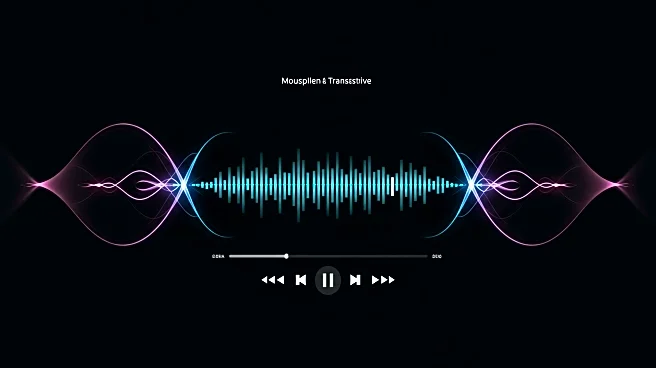Rapid Read • 8 min read
Spotify has introduced an expanded 'Follow Along' feature for audiobooks, aiming to enhance the listening experience by integrating visual elements. This feature, similar to the 'Kindle in Motion' concept, synchronizes time-stamped illustrations, graphics, and media with audio narration. The initiative is showcased in the audiobook edition of Bruce Holsinger's 'Culpability', featuring custom art from renowned designers like Rodrigo Corral. Spotify has created over 100 visual assets, including photos and illustrations, that appear as listeners progress through the audiobook. These visuals are also accessible in the 'extras' section, allowing users to select and listen to specific chapters. The 'Follow Along' feature is also applied to Bloomsbury's '33 1/3' series, bringing music criticism to life through narrated, visually guided editions.
AD
The expansion of Spotify's 'Follow Along' feature represents a significant innovation in the audiobook market, potentially transforming how users engage with audio content. By integrating visual elements, Spotify aims to deepen narrative immersion, offering a more interactive and engaging experience. This development could attract new users to audiobooks, expanding the market and providing opportunities for publishers and designers. However, it also raises questions about the traditional appeal of audiobooks, which is their ability to be consumed while multitasking. The need to focus on visual content may limit the flexibility that audiobooks traditionally offer, potentially altering user habits and preferences.
Spotify's commitment to developing the 'Follow Along' feature suggests ongoing enhancements and potential expansion to more titles and genres. The company may continue to collaborate with designers and publishers to create unique visual experiences for audiobooks. As the feature gains traction, it could influence other audiobook platforms to adopt similar strategies, leading to increased competition and innovation in the industry. User feedback and engagement will likely play a crucial role in shaping the future of this feature, determining its success and sustainability in the audiobook market.
The introduction of visual elements in audiobooks could have broader implications for the publishing industry, potentially leading to new forms of storytelling and content creation. It may encourage authors and publishers to explore multimedia formats, blending traditional narratives with interactive components. This shift could also impact the design and production of audiobooks, requiring new skills and collaborations between writers, designers, and tech developers. Additionally, the feature may raise ethical considerations regarding screen time and digital consumption, prompting discussions about the balance between technology and traditional reading experiences.
AD
More Stories You Might Enjoy










